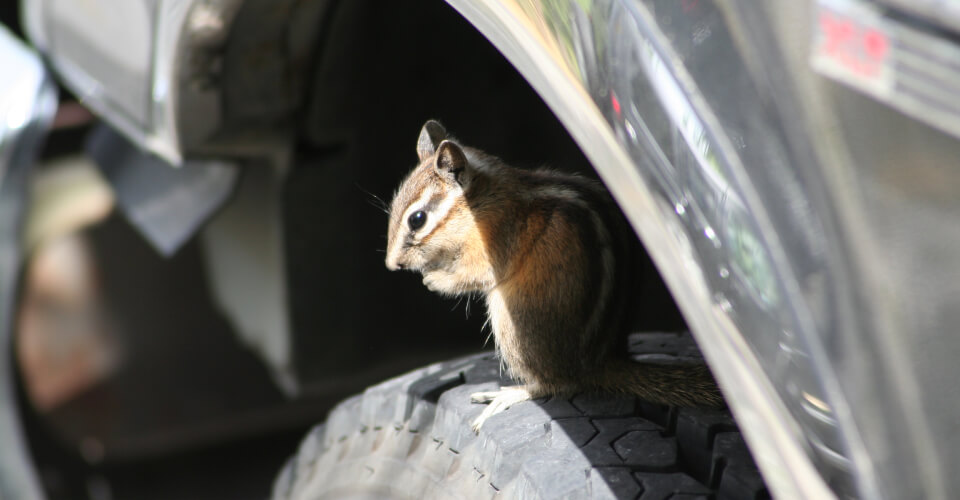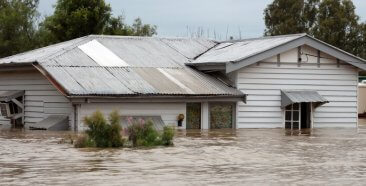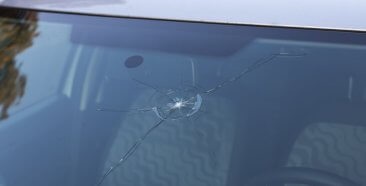
They may be cute and even cuddly, but small animals, also known as “critters”, can wreak havoc with your vehicle and your auto insurance. A single rodent, such as a squirrel, rat or mouse, can crawl under the hood of your vehicle and behind the dashboard, causing more damage than you could ever imagine.
Suddenly, you have to file a claim with your insurance company to replace all the wiring or repair damage that could easily run into the thousands of dollars. Not surprisingly, critters look for a warm place they can call home – even temporarily – protected from the elements while chewing on anything that looks or tastes good, including hoses, belts, insulation, and colorful wiring.
The trouble with them is, if there’s one, you can usually count on many more being in the vicinity. And, the last thing you want is a rodent infestation where your vehicle’s engine compartment becomes the main party scene for the small animal crowd.
How Does Car Insurance Cover Rodent Damage?
Auto insurance typically covers damage caused by pesky rodents, such as chewed wires, under the comprehensive coverage portion of your policy. If you have this type of coverage and your vehicle is damaged by critters, you will typically have to pay a deductible, and the insurance company will cover the remaining cost to repair the damage.
However, it is important to note that not all insurance policies cover the cost of rodent damage, so it is best to check with your provider to confirm if this type of damage is covered under yours. Additionally, if you live in an area with a high population of small animals, it may be beneficial to invest in preventative measures, such as sealing holes in your automobile’s engine and using rodent repellent, to avoid having to file a claim in the first place.
Why Do Rodents Eat Car Wires?
Rodents have sharp teeth that continuously grow, which means they have a constant urge to gnaw on objects. Car wires are made of soft materials like rubber and plastic, making them an easy target to chew on. These creatures are attracted to the smell of oil and grease from the wires, and when they nibble on the wires, it creates a hole in the insulation, exposing the wire, which they then continue to chew through. As a result, they can cause significant damage to the electrical system, leading to expensive repair.
Apart from their urge to gnaw, rodents are also attracted to the warmth generated by the engine, especially in cold climates and during the coldest time of year. For them, it’s basically a cozy winter paradise. They tend to seek shelter in warm places during the winter, and the engine compartment provides an ideal location for them to do so. In their search for food and a warm place to stay, they often come across car wires and start gnawing on them, which can cause significant damage to the vehicle’s electrical system. The presence of nests also increases the risk of fire, as the wire insulation can be easily ignited by sparks from the engine.
How to Prevent Rodents from Chewing Car Wires
One of the most effective ways to prevent small animals from chewing on wires is to keep your automobile clean and free of debris. This means regularly cleaning out the trunk and removing any food or garbage that might attract rodents. It is also important to keep the engine bay free of debris and clean up any spills or leaks that might interest little critters. Keeping the car in a garage or covered parking area is also a good way to reduce the likelihood of them chewing on the wires.
Another effective method is to use repellents or deterrents. These can come in the form of sprays, granules, or electronic devices that emit high-pitched sounds that are unpleasant to critters. Be sure to follow the manufacturer’s instructions when using these products, as some may be toxic to pets or humans if not used properly.
If the problem persists, it may be necessary to have a professional pest control company treat the area. This will ensure that the problem is properly addressed and prevented from happening again in the future.
What Type of Insurance Covers Rodent Damage?
Comprehensive auto insurance is the type of policy that covers rodent damage in cars and so much more. This coverage is designed to protect drivers from damage caused by factors outside of their control, such as vandalism, theft, and in this case, critters. If a rodent damages electrical wiring or causes other types of damage to the vehicle, comprehensive car insurance can provide the necessary coverage to repair it. It’s important to note that this is an option that is typically added to a basic auto insurance policy, so car owners must opt for this in order to receive protection for this specific damage.
What Is Comprehensive Coverage
Comprehensive coverage is an insurance policy that provides protection for damages incurred from non-collision incidents. This includes events as the ones mentioned above, as well as fire, natural disasters, and impact with an animal. It’s not mandatory for car owners, but it is highly recommended, especially for those who own newer or more expensive models. This coverage helps mitigate the financial impact of unforeseen events that may cause damage to the vehicle, and ensures that the car owner is not left with a large repair bill.
The cost depends on several factors, such as the type of vehicle, the age of the driver, and the parking location. It is important to shop around and compare quotes from different insurance companies to find the best and economic coverage for your needs and budget. With comprehensive coverage, car owners can have peace of mind knowing that they are protected in the event of a non-collision incident, and that they are not left with a large financial burden.
How to Claim Rodent Damage
To claim this kind of damage, the first thing to do is gather evidence of it. This includes:
1. Taking photographs of the affected area:
Register any physical and anecdotal evidence such as chewed wires or insulation. It is valuable to document the extent of the damage and any evidence of the presence of rodents, such as droppings or gnaw marks.
2. Contact the insurance company and report the claim:
The insurance company will typically request the documentation gathered in the first step and may also send an adjuster to inspect the car.
Once the claim is submitted, the insurance company will review the evidence and determine whether the damage was caused by small animals. If the damage is covered under the policy, the insurance company should pay for the repair costs.
It is important to use a reputable repair shop and to obtain an estimate for the repairs. If the repair cost exceeds the coverage limit, the policyholder may need to pay the difference out of pocket. In some cases, the insurance company may also require a deductible to be paid before the repairs can begin. To ensure that the claim process goes smoothly, it is advisable to follow the insurance company’s guidelines and to keep good records of all communication and documentation related to the claim.
Find The Best Comprehensive Coverage Plan For You
At Freeway Insurance, we understand the importance of having complete coverage for your car. That is why we offer a variety of coverage plans that cater to your individual needs and budget. Our team of insurance experts will work with you to find the best comprehensive coverage plan for you.
Whether you are looking for basic coverage or comprehensive coverage with added benefits, Freeway Insurance has got you covered. With competitive pricing and exceptional customer service, you can rest assured that you are getting the best value for your money. Get a quote online! You can also call us at (800) 777-5620 or visit any of our offices today!



